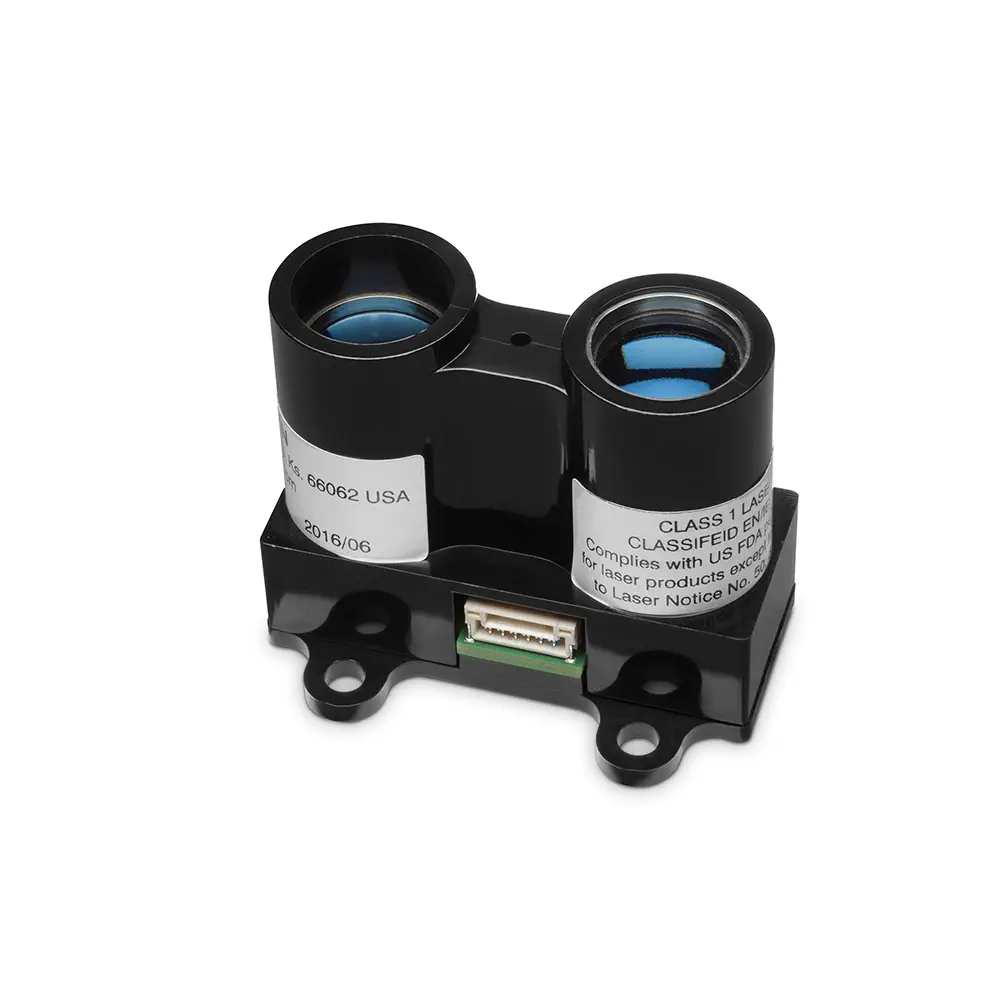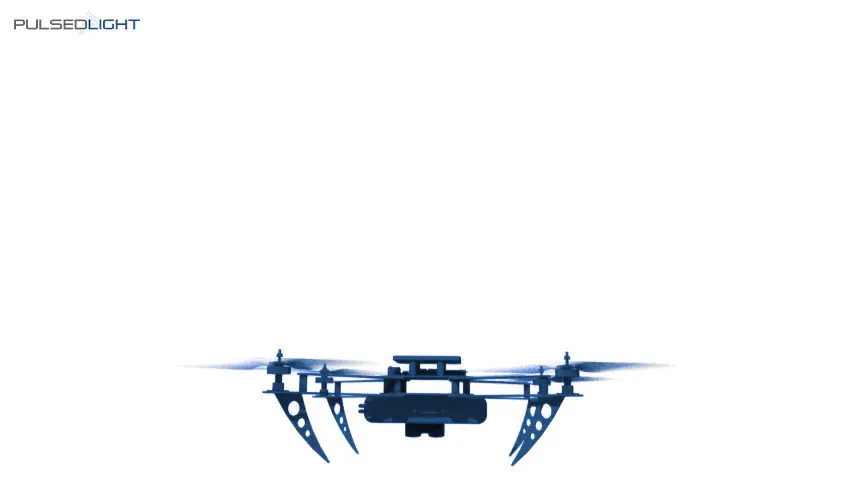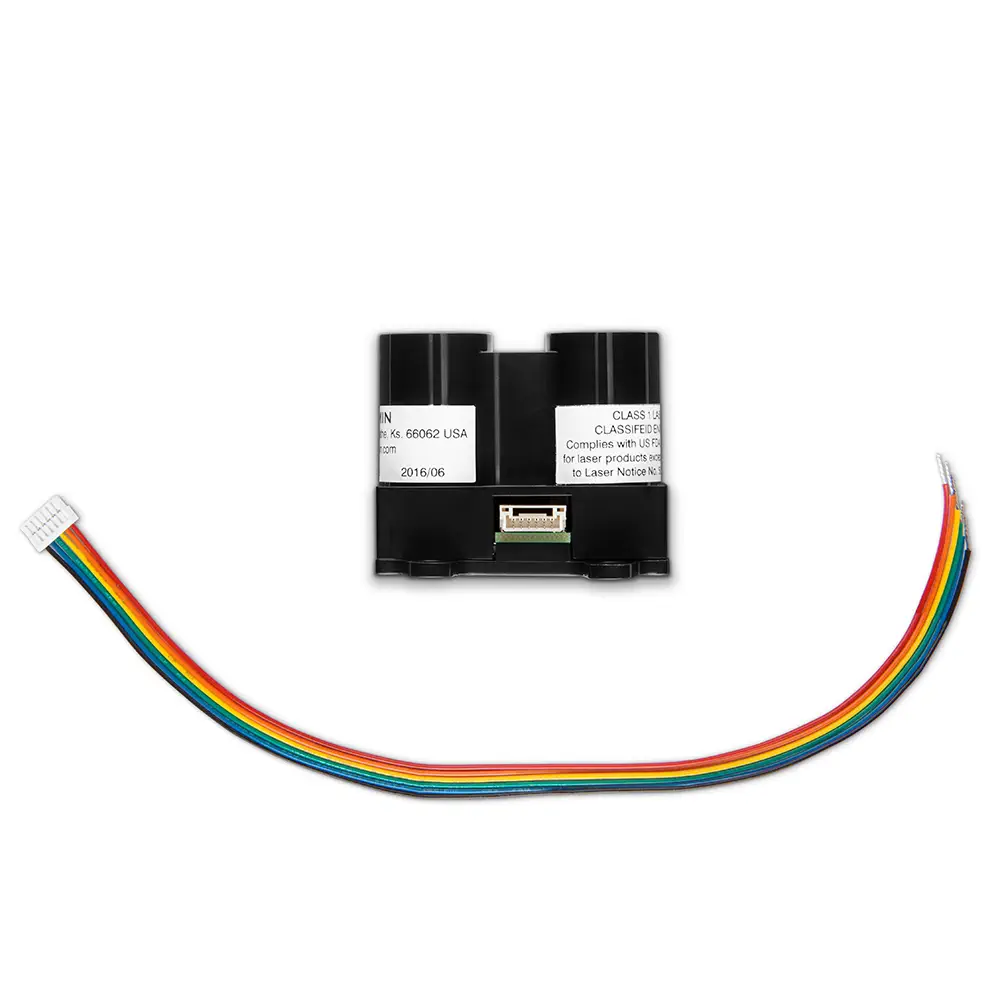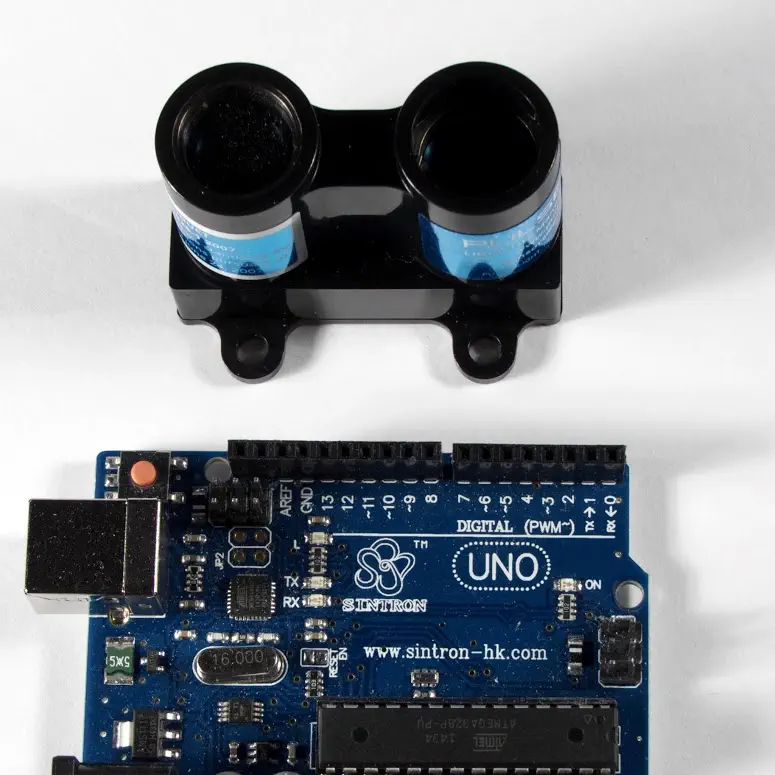- Compact 48mm x 40mm x 20mm module with 40m measuring range
- Signal Processing Improvements offer 5X Faster Measurement Speeds
- Improved I2C Communications and assignable I2C Addressing
- Great for drones, robotics and other demanding applications
The LIDAR-Lite 3 Laser Rangefinder by Garmin is an essential, powerful, scalable and economical laser based measurement solution supporting a wide variety of applications (ex. drones, general robotics, industrial sensing and more). Measures distance, velocity and signal strength of cooperative and non cooperative targets at distances from zero to more than 40 meters. Offering the highest performance available in a single beam ranging sensor in its class.
The new LIDAR-Lite has all of the same specifications as the legacy sensor: Up to 40-meter range capability with 1cm resolution, small size, low power consumption and light weight. There have been a number of upgrades:
Signal Processing Improvements offer 5X Faster Measurement Speeds
- With the implementation of a new signal processing architecture, LIDAR-Lite will now operate at measurement speeds of up to 500 readings per second offering greater resolution for scanning applications.
Improved I2C Communications
- LIDAR-Lite I2C communication will now operate at 100kbits/s or 400kbits/s.
- Now broadly compatible with the most basic of I2C drivers and most micro-controller boards. Instead of “ack” and “nack” responses when the sensor is available or busy, a status register (0x01) can be queried to indicate sensor status.
- The previous measurement value can be read anytime during an acquisition until it is overwritten by a new value. No need to wait for the sensor to become available to read data. Just fire it up and let it rip!
User Assignable I2C Addressing
- Individual sensors can have a unique I2C address.
- The base address of 0x62 can be used as the default in single sensor applications and it will also be available in multi-sensor applications as a broadcast address to initiate a command to all the LIDAR-Lites on the I2C bus.
Compatible with the Legacy Sensor in all primary functions
- Compatibility will extend into future versions and product variants, i.e. LED based sensor, long range or high rep rate products.
Expanded Support and Documentation Team
-
Application code improved and updated. Many projects ready to run with only an Arduino and the sensor right out of the box.
- Documentation expanded to support new functions

The combination of attributes found in the LIDAR-Lite - high performance, low cost, small size, light-weight, low power consumption, and dynamic configurability along with I2C communications and addressing - means that it becomes practical to install multiple sensors on a project with minimal weight and power penalties. The beam width of the LIDAR-Lite as delivered is .5°. This narrow beam provides long-range performance and also enables better target selectivity than an ultrasonic sensor.

The laser version of the PulsedLight LIDAR-Lite uses an edge emitting, 905nm, single stripe laser. This Laser Product is designated as Class 1 during all procedures of operation, however operating the sensor without its optics or housing or making modifications to the housing can result in direct exposure to laser radiation and the risk of permanent eye damage. Operating from a 5VDC power source and drawing only 100 milliamps peak power when taking a measurement and under 10 milliamps when idle, the LIDAR-Lite is ideally suited for projects running from battery sources where low power consumption is critical.

Unique, Accurate, Lightweight & Economical
Great for drones, robotics and other demanding applications. The technology allows to use smaller, cheaper and more efficient components while still achieving comparable or better performance than existing technologies, empowering incredible application design flexibility at a low cost.

The applications are virtually unlimited
Automotive blind-spot sensing, smart city traffic monitoring , 3-D image scanning, collision avoidance, industrial fluid/grain/solids level measurement, security system components, musical instruments, medical imaging, aerospace, and so so much more.

Technology innovations
- The use of a signature matching technique (known as signal correlation) that estimates time delay by electronically sliding a stored transmit reference over the received signal in order to find the best match.
- Operation of the infrared LED or laser in short bursts allowing a 100:1 advantage in peak output power over measurement systems using a continuous beam.
- A novel current driver technology with nanosecond signal transition times at high peak currents to produce high power transmit burst sequences.
- A signal processing approach implementable in a single programmable logic chip.


















